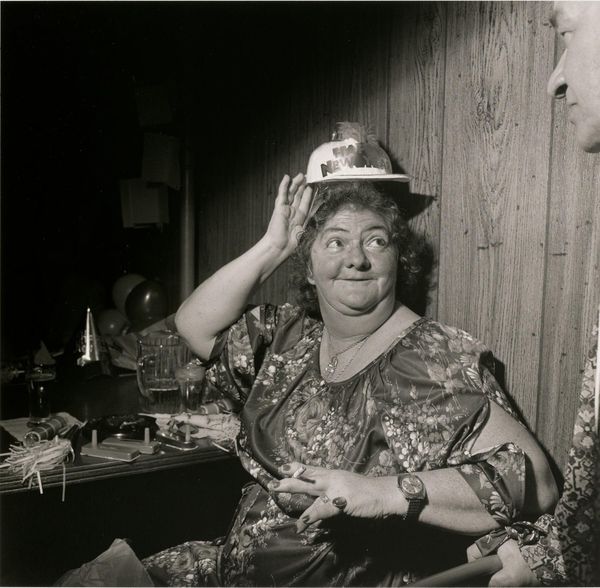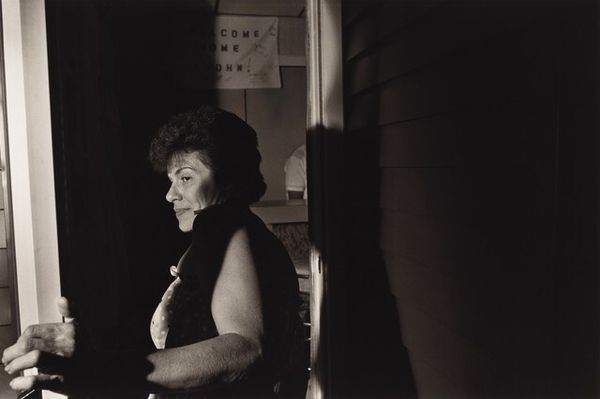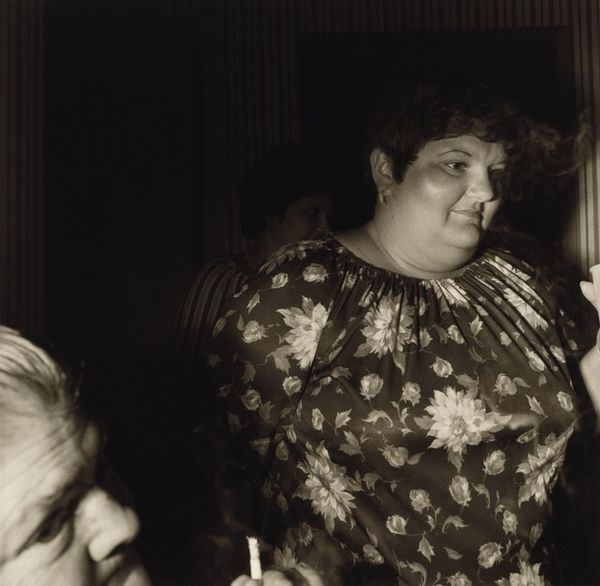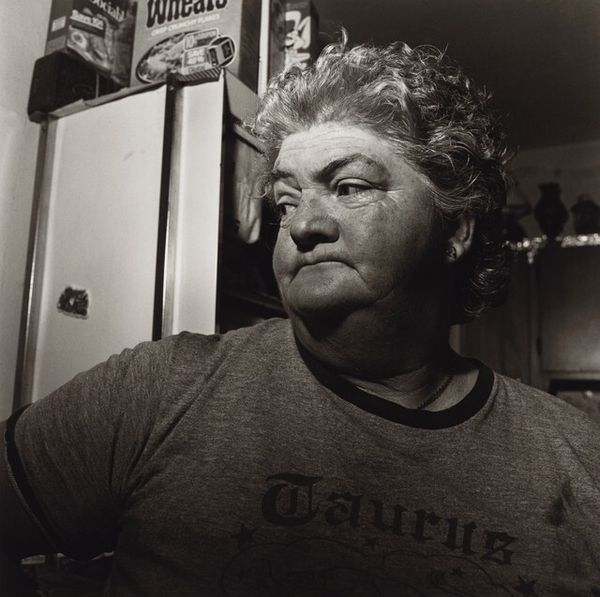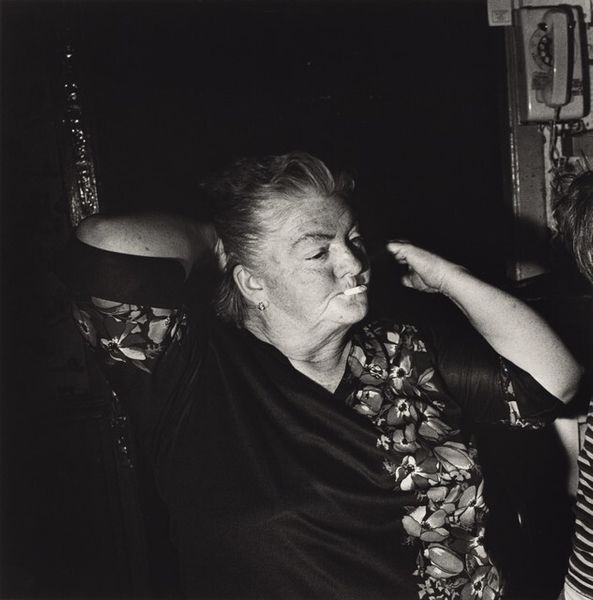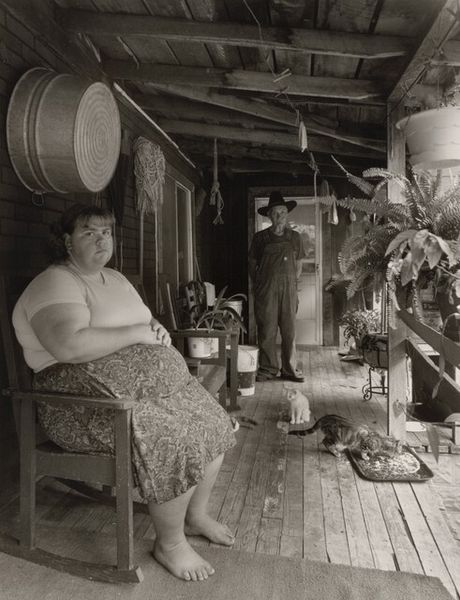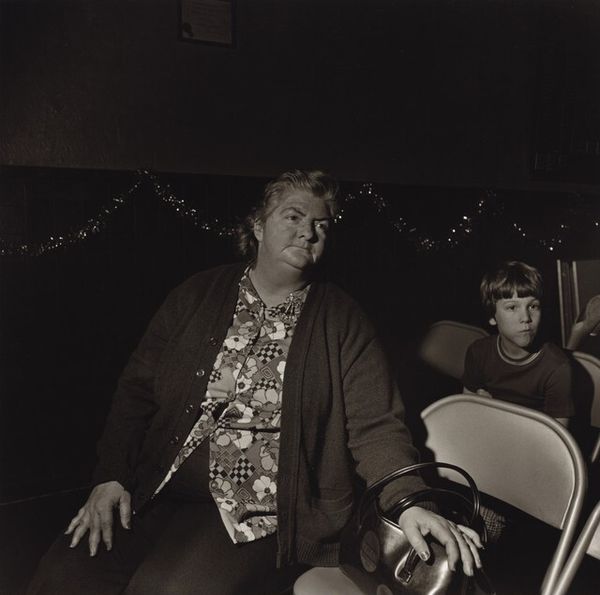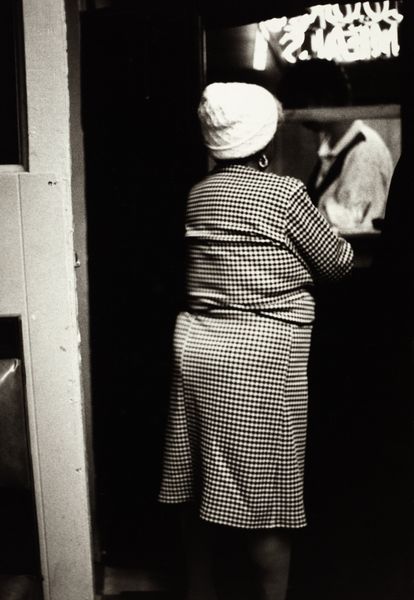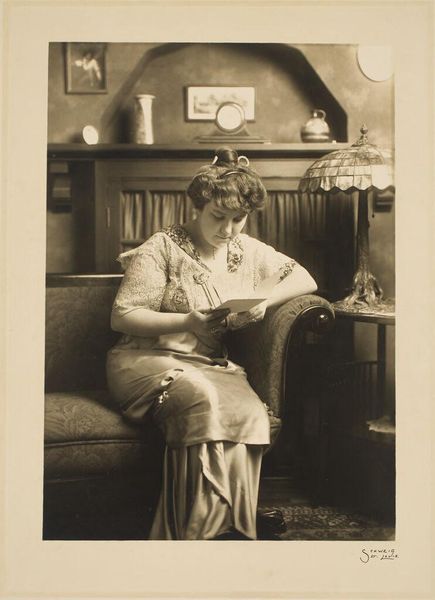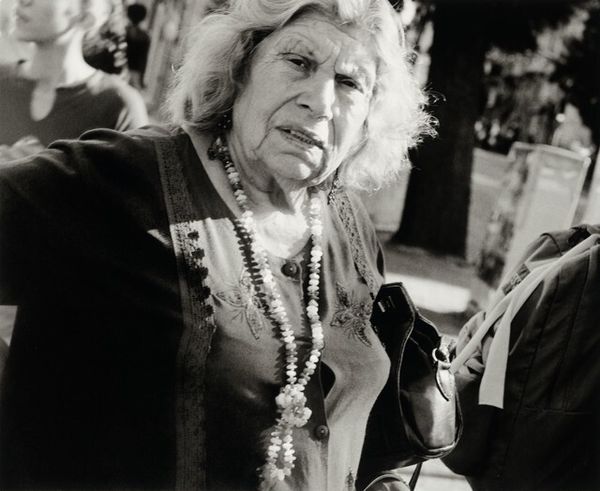
photography, gelatin-silver-print
#
portrait
#
black and white photography
#
social-realism
#
photography
#
black and white
#
gelatin-silver-print
#
monochrome photography
#
genre-painting
#
realism
#
monochrome
Dimensions: image: 35.2 × 35.7 cm (13 7/8 × 14 1/16 in.) sheet: 50.8 × 40.4 cm (20 × 15 7/8 in.)
Copyright: National Gallery of Art: CC0 1.0
Curator: Larry Fink’s "New Year's Eve Party, American Legion, Bangor, Pennsylvania," taken in 1979, presents a striking snapshot of revelry, or perhaps something else entirely. What do you make of this, viewed through a material lens? Editor: Initially, I’m struck by the texture and density achieved within a black and white gelatin-silver print. It gives a feeling of intimacy, almost claustrophobia. The lighting emphasizes the lived-in surfaces, the laminate wood paneling, the overflowing ashtray. There's a clear emphasis on showing us the tangible, constructed nature of this celebration. Curator: It certainly pulls us into the grit of a specific cultural moment, doesn’t it? Fink often explores themes of class, and here, we see an intersectional story of working-class leisure in late 20th century America, marked by its own performative gestures and gendered expectations. Notice how the woman, adorned in a party hat and floral dress, negotiates the space while holding a cigarette. She appears self-aware and assertive, but also a bit resigned. Editor: Exactly! The hat, barely balanced on her head, the cigarette, the rings on her fingers, even the watch on her wrist, they are all manufactured items which contribute to the event and also give us a window into understanding identity, in a moment captured via the technological means of photography. These are physical artifacts shaping how this moment unfolds and how Fink is recording this space. It also feels critical to the social space - a social event held at the American Legion. Curator: And isn’t there an implicit commentary embedded in capturing an "American Legion" celebration? This venue suggests a link between patriotism, masculinity, and a certain socio-economic bracket. The New Year's celebration becomes more complex in that space – is it a shared experience or one marked by visible social and economic stratifications? The choice of monochrome and the almost brutally honest realism reinforces an idea of unfiltered social commentary. Editor: Yes, and monochrome, the limited tonal range of the print, allows for a real focus on texture - from skin, the florals of the dress, and all of these materials coalesce, making it as much about documenting materiality and lived-in space as anything else. What about the role of labor? A party needs infrastructure; consider how much collective effort and materials make such celebrations possible, and how this ties into class. Curator: I appreciate your reminder of those often-invisible networks. Considering the cultural and historical landscape within the broader scope of gender and class dynamics in art… Fink compels us to confront some uncomfortable truths, while also leaving room for empathy. Editor: I’ll be thinking about the weight of all these things. Thanks!
Comments
No comments
Be the first to comment and join the conversation on the ultimate creative platform.
